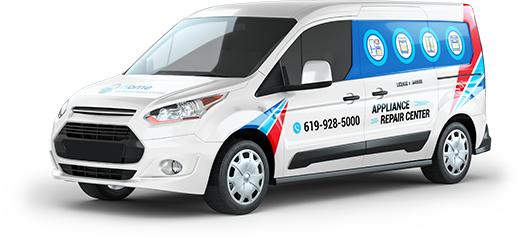The latest lines of kitchen appliances of the German concern are equipped with an advanced self-diagnostic system. It monitors the correct operation of the devices, and all error codes of Bosch dishwashers immediately display on the LCD screen in the form of alphanumeric abbreviations.
Typical malfunctions, which are considered typical of Bosch units, are indicated by the English letter “E” and one or two digits. This simplifies the process of troubleshooting and allows us to understand what exactly is wrong with the equipment and how to correct the situation.
Some models use “F” instead of “E” and keep the numeric value the same.
Code group #1 – complications with water heating
E01 indicates damage to the heating element or a break in the structural integrity of the heating element circuit. Most likely, this element is burned out, and further correct work is required to replace the heating element. In parallel, check the temperature sensor and make sure that it can provide reliable information.
E2 sometimes pops up alternately with E01 on the operating screen. This usually indicates that the internal water temperature sensor is defective. In this case, the heater will operate at full power, because the indicators about the level of heating will not be able to get to the control unit. If the problem is not solved in time the problem will overload the heating element and provoke its burnout.
E09 signals a problem with the flow heater. Most often this error is registered by models with the heating element, located in the depth of the circulating pump. A detailed diagnostic of the heating element with a multimeter should be performed to resolve the issue. If the resistance is at zero, the heater will need to be replaced.
E11 says that the temperature sensor is not receiving power, for example, due to a breakdown in communication between it and the control module.
Several causes provoke this at once, so the user will have to check for damage to such nodes as:
working contacts of the temperature sensor;
wiring coming from the temperature sensor;
Contact elements of the control module.
If the problem areas are visually detected, the machine will need to be disconnected from the power supply and only then start troubleshooting.
E12 appears on the dishwasher display when the heating element is overloaded as a result of a large amount of dirt or limescale buildup. After resetting the dishwasher, the code sometimes changes to E09, but regardless of the numbers, it indicates the same problem.
During repair work, it is necessary to strictly follow the basic safety rules and be sure to unplug the appliance from the power supply to avoid injuries and burns.
Code group #2 – clogging problems
The formation of all kinds of clogs is a weak point in all parameters of reliable and quality kitchen washing appliances Bosch. These unpleasant things happen, as a rule, due to users neglecting to remove food remains from dishes before loading them into the dishwasher.
E7, displayed on the display, deciphered as “inability to pump water from the tank as a result of clogged drain hole”.
There can be several reasons for this situation, such as:
– Improperly stacked dishes;
– An object blocking the water outlet;
– clogging of the drain with food remains fat deposits.
To eliminate the error code, simply stack the dishes more neatly, remove items that could potentially block the water outlet, and clean the surrounding area of anything that interferes with the flow of liquid. After these steps, the unit will return to normal operation.
E22 usually indicates that one of the internal filters of the unit is clogged. In this case, it is necessary to replace the clogged filters with new ones. The same code is sometimes displayed if there is a problem with the drain pump, for example, if the speed of the impeller has dropped. A more in-depth diagnosis is required here, similar to troubleshooting E21.
Error code E24 in Bosch dishwashers stands for kinked, blocked, or clogged drain hose, dirty drain, or blockage of the drain siphon. Causes can vary, and often this abbreviation occurs in conjunction with E22.
Fixing a problem of this nature is not difficult. It is sufficient to visually detect one of the above problems and correct it yourself or with the help of a service center employee.
E25 signals that food debris and other debris have accumulated in the socket part of the pump or the base of the drain hose, obstructing the passage of water. As a result, the capacity of the pump has decreased and it has lost the ability to fully drain the used liquid to the drain.
The next situation is that the appropriate sensors picked up on the problem and sent data to the unit’s control unit. As a result, the display showed the abbreviation E25, and the dishwasher stopped performing its direct functions.
To fix the problem it is necessary to disconnect the device from the power supply and water supply system, carefully clean the pipe and drain hose of sediment and clogs, and at the same time check the impeller element of the pump for entanglement by foreign waste elements.
The best solution is to call a master at home or contact the service center. This calls us, and we will give you the best repair service AT ALL SAN DIEGO. With our superior performance, absolute accuracy, extensive knowledge and experience, fast and efficient service, friendly attitude, free maintenance consultation, and after-service warranty, we are proud to say that we are the leading Repair Service Provider in San Diego. Customer satisfaction is our top priority, and we are always committed to what we do. We are open 24/7 a week, on weekends and holidays. Our engineers will come to you 15 minutes after your call in urgent cases. Give us a call, and SAN DIEGO APPLIANCE REPAIR will solve any problem.
Contact us
 619-928-5000
619-928-5000  Request Service
Request Service 
